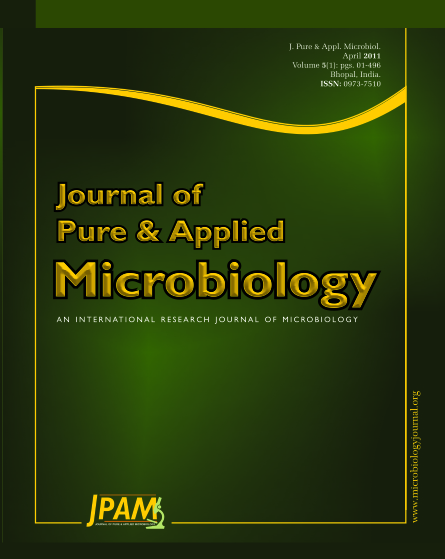Dyes are widely found in the textile, printing, food, pharmaceutical, leather, cosmetics and many other industries. The release of these compounds into the environment is undesirable, not only because of their color, but also because many azo dyes and their breakdown products are toxic and/or mutagenic to life. Azo dyes are characterized by one or more azo groups (R1-N = N-R2) linking substituted aromatic structures. Several microorganism are able to transform Azo dyes to non colored product or even mineralize them completely under certain environmental conditions. The present study involves the study about the biodegradation of Acid blue 74 and the optimization of the degrading process.
Acid Blue 74 dye, Pseudomonas sp., Biodegradation
© The Author(s) 2011. Open Access. This article is distributed under the terms of the Creative Commons Attribution 4.0 International License which permits unrestricted use, sharing, distribution, and reproduction in any medium, provided you give appropriate credit to the original author(s) and the source, provide a link to the Creative Commons license, and indicate if changes were made.


